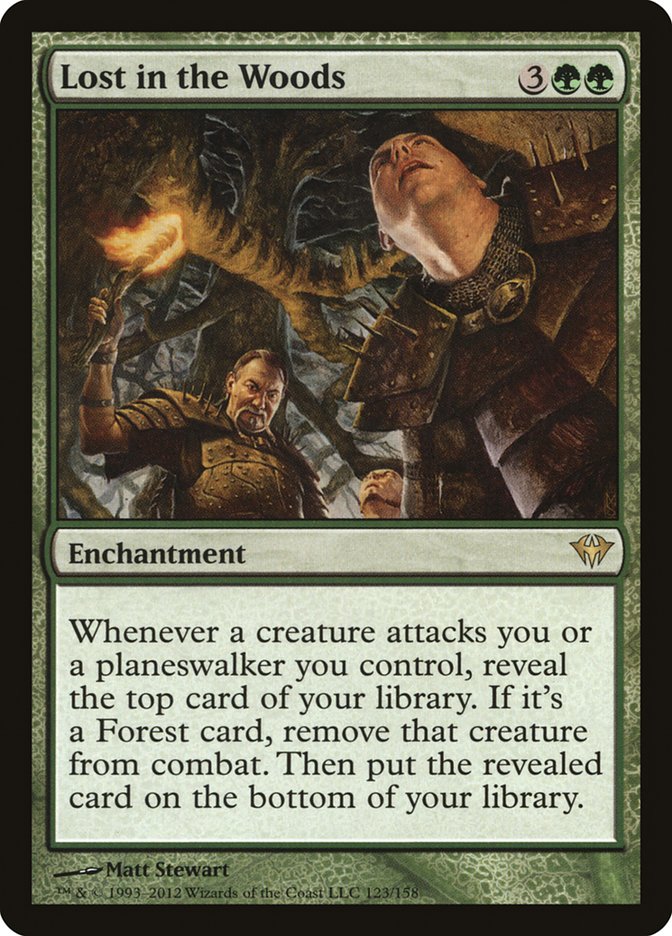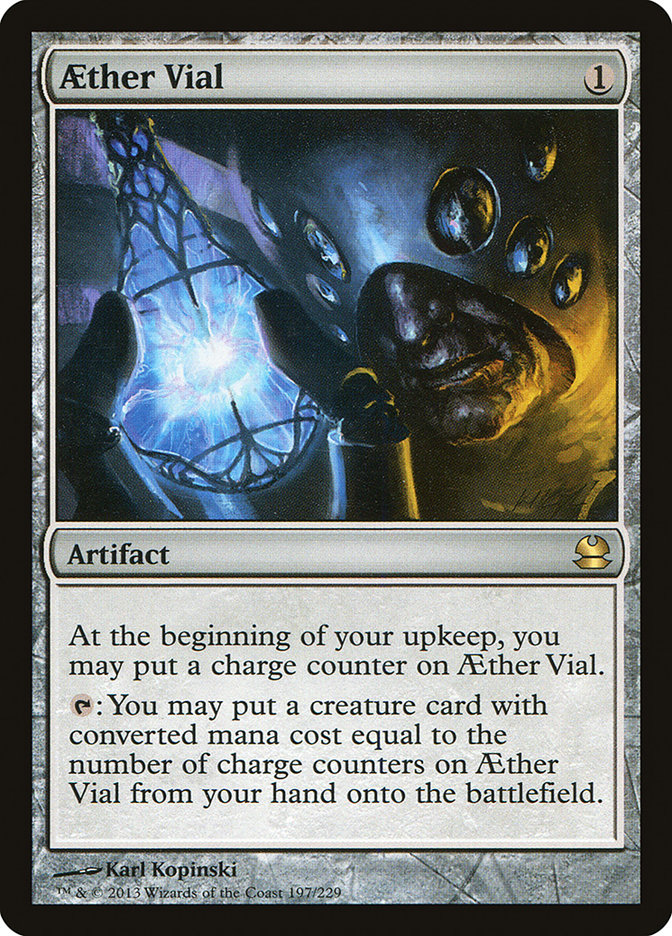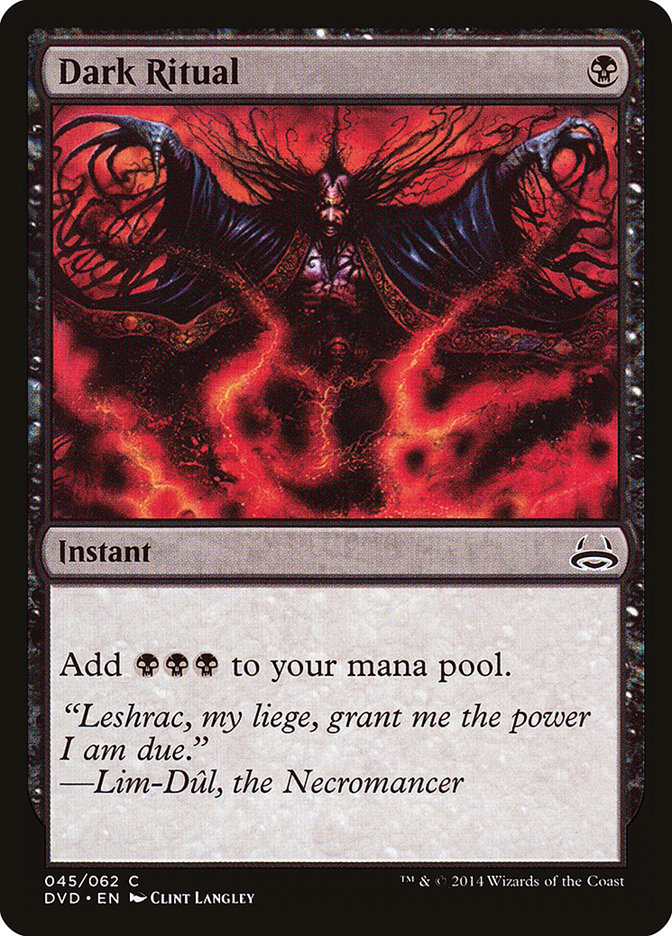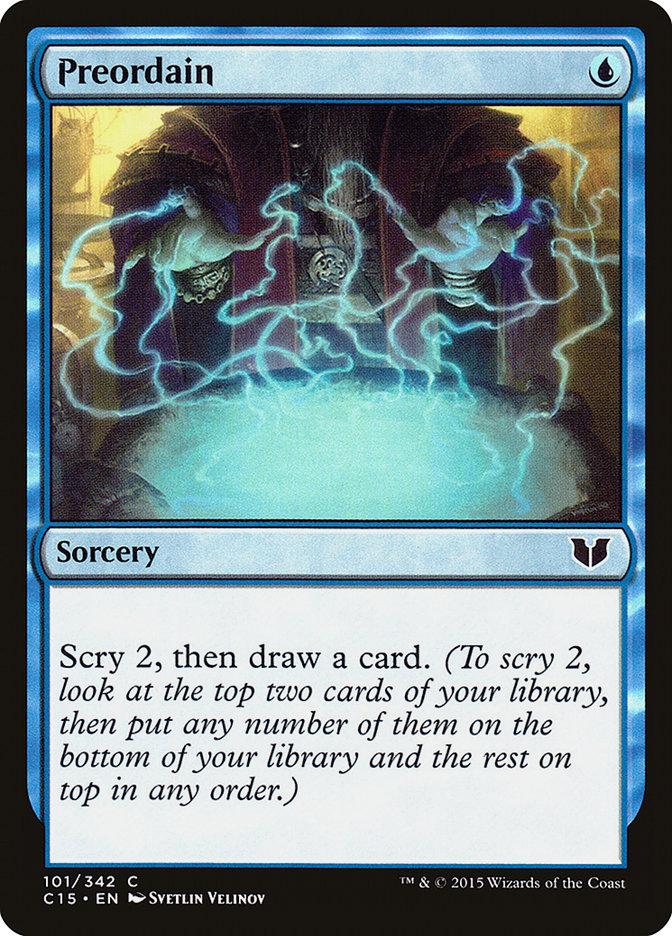Stories always seem to have some sort of real-life application. Sometimes it’s a piece of the author being turned into a full character; other times it’s something as direct as a fable, laying out a moral or wisdom-related lesson. Despite it rarely being more than a story to scare children, Hansel and Gretel actually has applications to Magic that aren’t quite apparent at first glance.*
*For those who haven’t had the opportunity to read it, the Wikipedia page on Hansel and Gretel is relatively faithful to the original story.
To summarize what’s important here, Hansel and Gretel are children led into the forest by a wicked stepmother who wishes to abandon them where they can’t find their way back. Hansel realizes what the stepmother plans to do and leaves a trail of white pebbles into the forest. After being abandoned by their parents, Hansel and Gretel follow the pebbles back home, much to the chagrin of their stepmother.
The stepmother then forces the father to lead them even further into the forest, without providing Hansel time to collect any white stones to help them find their way. In the short amount of time that Hansel has to prepare, he takes a piece of bread, planning to leave a trail of bread crumbs back home. After the father leads them into the forest, Hansel and Gretel discover that birds have eaten the bread crumbs that Hansel laid, leaving them lost in the woods.
Hints in Magic, particularly older formats, can be similar to leaving a trail. Sequencing creatures, spells, and even lands can completely change what the opponent is led to believe and what they think their best course of action is. This can be used to your advantage in order to lead your opponent toward suboptimal lines of play or improperly evaluating the significance of cards in their hand.
Leaving a Trail
Imagine you’re playing a Miracles deck similar to the following list:
Creatures (8)
Planeswalkers (2)
Lands (22)
Spells (28)
- 4 Sensei's Divining Top
- 4 Brainstorm
- 3 Force of Will
- 3 Swords to Plowshares
- 2 Spell Snare
- 4 Counterbalance
- 2 Ponder
- 2 Entreat the Angels
- 4 Terminus
Sideboard

Now imagine this beauty of an opening hand.
The first few moves to make with this hand are incredibly contextual based on how much information you and your opponent each have about one another. The opening turn of the game is pretty linear if it’s known what deck each player is bringing to the table.
For a majority of games in a tournament setting, neither player is going to be aware of what the opponent is playing. There are several directions to take this hand, depending on how the first turn plays out and what information you want to give to the opponent. Particularly when on the play, thinking of how to play this hand is almost entirely rooted in signaling and how your actions will dictate the opponent’s decisions.
Leading on Volcanic Island into Ponder, for example, is more likely to signal a Delver of Secrets or Storm deck instead of Miracles.
Creatures (14)
Lands (18)
Spells (28)

Lands (15)
Spells (45)
- 1 Tendrils of Agony
- 4 Brainstorm
- 4 Cabal Ritual
- 3 Duress
- 4 Dark Ritual
- 3 Cabal Therapy
- 4 Lotus Petal
- 4 Lion's Eye Diamond
- 4 Infernal Tutor
- 4 Ponder
- 1 Ad Nauseam
- 2 Preordain
- 4 Gitaxian Probe
- 1 Past in Flames
- 2 Dark Petition
Sideboard

Depending on how the opponent plans to counter either of these decks, the opponent may be more likely to go for their all-in combo (if they assume you’re playing the interaction-light Storm deck). The opponent may also be incentivized to start trying to use copies of Wasteland to deny early mana sources if you’re perceived to be playing the basic land-less deck with Daze.
No matter what cards you elect to play, the opponent is going to gain information about what cards are in your deck and what you’ve chosen to do. Plays in the same vein as the aforementioned “Volcanic Island into Ponder” sequence that mislead the opponent are what I think of as leaving bread crumbs. If you’re locked in to a situation during which you have to give information to the opponent, you can leave a trail that won’t take the opponent “home” (read: to what you are actually planning).
Despite making you feel clever at times, atypical early sequencing isn’t always going to be correct. There will be times where it is correct to just leave a trail of pebbles for the opponent to find out exactly what is going on. These instances are generally when there isn’t a realistic play other than what will give away what you are playing, or when giving away the information is a fair trade-off for the effect that it will generate.
In this hand, it is hard to argue that there is anything to do outside of playing a dual land and casting Sensei’s Divining Top. Even though this opening would effectively tell the opponent that you are playing some form of Miracles, having the Counterbalance plus Sensei’s Divining Top combo online by the second turn is a powerful enough payoff to warrant giving up the information here.
Following a Trail
What can do you do defend against these same tactics?
That’s not always so easy. The easiest answer to the question is to learn as many of the openings that opponents can make as possible in order to zero in on their strategy as early as possible. The best way to do this on the short term is to try memorizing as many archetypes as possible from one of the various Legacy deck databases online.
The method that will make you grow the most as a player is to try to recognize what kinds of cards go in specific decks. This doesn’t just mean thinking of exact cards and imaging some decklist that they are a part of; it goes much deeper. What do all of these cards have in common?
They all tell you a great deal about the cards in the opponent’s deck, whether you know exactly what archetype they’re playing or not. Every single one of these cards has some sort of deckbuilding constraint built into them.
Griselbrand is likely the most powerful creature-based thing that anyone can be doing in Legacy. Any sign of this card (say, if you’re playing Gitaxian Probe, Thought-Knot Seer, Thoughtseize, or anything else that gives you a glimpse at the opponent’s hand) says that the opponent is playing something that cheats big creatures onto the battlefield.
The problematic things to look for from these strategies are the cards that actually put the creature onto the battlefield.
This isn’t always limited to Griselbrand; “Johnny Hookhands” is just the most common thing for people to put onto the battlefield without paying its mana cost. The red flag for this kind of strategy is any creature that seems uncastable in the context of whatever else the deck is doing. If someone is opening on Underground Sea or Mountain, it’s unlikely they’re going to actually cast Iona, Shield of Emeria or Emrakul, the Aeons Torn.
Aether Vial is a signal that a deck is going to be playing a pile of (mostly) fair creatures that benefit from the virtual mana that Aether Vial provides. There are a handful of decks that make use of this, but they all tend to be answered in similar ways.
Creatures (27)
- 4 Mother of Runes
- 1 Mangara of Corondor
- 2 Serra Avenger
- 4 Flickerwisp
- 4 Stoneforge Mystic
- 2 Mirran Crusader
- 3 Phyrexian Revoker
- 4 Thalia, Guardian of Thraben
- 1 Brimaz, King of Oreskos
- 2 Recruiter of the Guard
Lands (23)
Spells (10)

Creatures (24)
- 4 Crystalline Sliver
- 3 Muscle Sliver
- 3 Hibernation Sliver
- 4 Sinew Sliver
- 2 Phantasmal Image
- 4 Predatory Sliver
- 4 Galerider Sliver
Lands (20)
Spells (16)

If an opponent leads on Aether Vial, it becomes important to value removal higher than normal in order to disrupt the chain of creatures. The other option against these archetypes is to try to race whatever creature-based strategy they will present. Merfolk is likely the only Aether Vial deck that will have heavy amounts of permission (as all of their creatures can be pitched to Force of Will).
Chalice of the Void decks skimp on one-mana spells. It’s easy to ignore how many important spells in Legacy cost one mana until you really take a look at the format:
Chalice of the Void decks rely on blanking significant portions of the opponent’s deck while hurting very little of their own. If you have the ability to deal with an early Chalice of the Void, it is unlikely that you will have to navigate around most of the format’s premier removal spells or more mana-efficient threats.
Chalice of the Void decks also tend to play some fast mana options in either “Sol lands” (City of Traitors, Ancient Tomb), zero-cost artifact mana rocks (Mox Diamond, Chrome Mox), or one-off mana producers that allow you to effectively discard a card for a single quick mana (Simian Spirit Guide, Lotus Petal).
Having a high-density of fast mana options generally results in Chalice of the Void decks playing either a high density of two-drop spells (due to their ability to crank out two-mana spells starting on the first turn) or going much higher on the curve.
Creatures (10)
Planeswalkers (3)
Lands (27)
Spells (20)

Creatures (25)
- 3 Simian Spirit Guide
- 4 Endless One
- 2 Endbringer
- 4 Eldrazi Mimic
- 4 Reality Smasher
- 4 Thought-Knot Seer
- 4 Matter Reshaper
Lands (25)
Spells (10)
Sideboard

They’re Storming. There are different flavors of Storm and there are different things that decks can use as a payoff card, but generally speaking, anything with Dark Ritual in the deck is trying to chain several spells within the same turn. Dark Ritual decks are also hand destruction decks, meaning that in order to force through their train of spells, these decks tend to play some combination of Thoughtseize, Cabal Therapy, Inquisition of Kozilek, and Duress.
The most common payoff card to see from these decks is Tendrils of Agony, as it is a clean kill that can be cast off mana produced by Dark Ritual and Cabal Ritual. There are also decks that try to cast hand destruction and reanimation spells in the same turn (before the opponent has a chance to develop their hand or mana).
Against these decks, something unfair is going on and a significant portion of the opponent’s deck is going to be cards making up the engine-portion of their combo.
When it comes to leaving a trail of pebbles, Preordain is almost a blue Dark Ritual. With cantrips as powerful as Brainstorm and Ponder in the format, it is rare that fair decks are going to play copies of Preordain. It’s been done in Miracles from time to time, but Preordain tends to show up in decks that are digging for specific parts of a combo.
Lands (15)
Spells (45)

Creatures (2)
Planeswalkers (1)
Lands (20)
Spells (37)

While these decks may operate on a different axis, the way to attack each deck is similar. Seeing the opponent lead with Preordain should be a pretty strong tell that the opponent is doing something unfair, blue, and planned.
The Tabernacle at Pendrell Vale is an extreme example, but cards in this vein (Moat, Ensaring Bridge, etc.) all show that the opponent is planning to (a) play a longer game and (b) use very few creatures, if any. Taking an aggressive role against these archetypes is crucial to your success, because outside of a handful of archetypes, planning to play in the late-game isn’t going to work out.
Wrap-Up
Signaling translates to formats past Legacy, but the card selection in Legacy (and Vintage) tends to make signaling in the early-game significantly more important. If the opponent doesn’t know how important their removal is, they may use Brainstorm in conjunction with a fetchland to shuffle away Lightning Bolt, when in reality it is one of the more important cards for the matchup.
Converting these ideas to Standard or Modern isn’t particularly hard, but it isn’t always going to result in a huge shift in decision trees. In Standard a majority of signaling is going to come down to which land to play in conjunction with an early Thraben Inspector in order to conceal from the opponent whether you’re on Mardu Vehicles or W/U Flash. In Modern, it can often lead to deciding on which fetchlands to play in a predominately mono-colored deck (think Infect or Burn) in order to drop some proverbial bread crumbs for the opponent to mislead themselves.
Are there any signaling aspects that I missed or that you have questions about? What’s the best way you have to lead the opponent in the wrong direction in Legacy? Modern? Standard? Commander?









